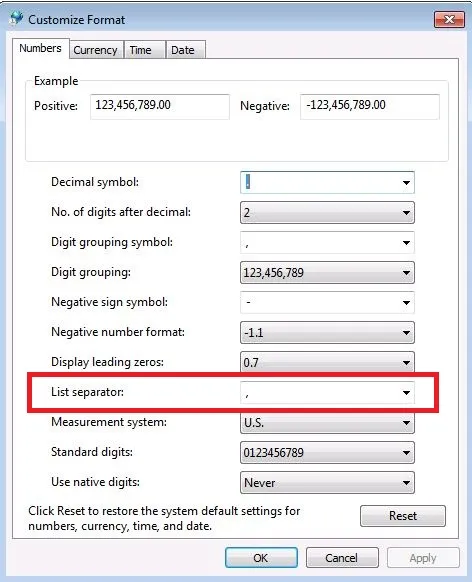我需要解析从数据库导出的以分号为分隔符的CSV文件。
$csv = import-csv -Path C:\Users\user\Desktop\bla\file.csv -Delimiter ';'
foreach ($line in $csv) {
$field = $line -split ';'
echo $field[3]
}
这不太好工作,因为在其中一个列中我有示例HTML代码,我必须使用它。字段以;<div>开头,以</div>;结尾;在标签之间,我有带有style属性的标签,因此有很多分号。有没有什么想法可以修复或解析包含文本的文件?
CSV文件的几行
product_code;active;name;price;vat;unit;category;producer;other_price;weight;description;stock;stock_warnlevel;availability;delivery;views;rank;rank_votes;images 1;images 2;images 3;images 4;images 5;images 6
raz;1;nazwa pierwszego;19.95;23%;szt.;kategoria;producent1;;1;<div style="background-color:#fff;min-width:640px;max-width:980px;margin:0 auto;padding: 30px"><table style="width:100%;" class="mceItemTable"><tbody><tr><td style="width:50%;"><p style="text-align:;font:16px arial;color:;margin:1em 0;">sometext</p></td><td style="width:50%;"><img style="width:100%;max-width:600px;display:block;margin:0 auto;" src="http://domain.tld/image.png"></td></tr></tbody></table></div>;;1;auto;48 godzin;0;0;0;http://domain.tld/image.jpg;http://domain.tld/image.jpg;http://domain.tld/image.jpg;http://domain.tld/image.jpg;http://domain.tld/image.jpg;http://domain.tld/image.jpg
dwa;1;nazwa drugiego;25.95;23%;szt.;kategoria;producent2;;1;<div style="background-color:#fff;min-width:640px;max-width:980px;margin:0 auto;padding: 30px"><table style="width:100%;" class="mceItemTable"><tbody><tr><td style="width:50%;"><p style="text-align:;font:16px arial;color:;margin:1em 0;">sometext</p></td><td style="width:50%;"><img style="width:100%;max-width:600px;display:block;margin:0 auto;" src="http://domain.tld/image.png"></td></tr></tbody></table></div>;12.0000;1;auto;48 godzin;0;0;0;http://domain.tld/image.jpg;http://domain.tld/image.jpg;http://domain.tld/image.jpg;http://domain.tld/image.jpg;http://domain.tld/image.jpg;http://domain.tld/image.jpg
trzy;1;nazwa trzeciego;29.95;23%;szt.;kategoria;producent1;;1;<div style="background-color:#fff;min-width:640px;max-width:980px;margin:0 auto;padding: 30px"><table style="width:100%;" class="mceItemTable"><tbody><tr><td style="width:50%;"><p style="text-align:;font:16px arial;color:;margin:1em 0;">sometext</p></td><td style="width:50%;"><img style="width:100%;max-width:600px;display:block;margin:0 auto;" src="http://domain.tld/image.png"></td></tr></tbody></table></div>;1.0000;1;auto;48 godzin;0;0;0;http://domain.tld/image.jpg;http://domain.tld/image.jpg;http://domain.tld/image.jpg;http://domain.tld/image.jpg;http://domain.tld/image.jpg;http://domain.tld/image.jpg
cztery;1;nazwa czwartego;3.95;23%;szt.;kategoria;producent2;;1;<div style="background-color:#fff;min-width:640px;max-width:980px;margin:0 auto;padding: 30px"><table style="width:100%;" class="mceItemTable"><tbody><tr><td style="width:50%;"><p style="text-align:;font:16px arial;color:;margin:1em 0;">sometext</p></td><td style="width:50%;"><img style="width:100%;max-width:600px;display:block;margin:0 auto;" src="http://domain.tld/image.png"></td></tr></tbody></table></div>;2.0000;1;auto;48 godzin;0;0;0;http://domain.tld/image.jpg;http://domain.tld/image.jpg;http://domain.tld/image.jpg;http://domain.tld/image.jpg;http://domain.tld/image.jpg;http://domain.tld/image.jpg


<div开头,以</div>结尾,正则表达式无法工作? - tomipnh